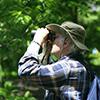
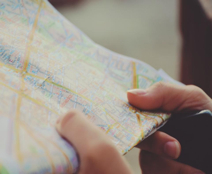 Preparation is essential - when traveling anywhere to utilize a camera system to photograph wildlife whether it's a weekend trip to a local mountain range or a month long journey to the Australian outback preparation is essential. Make a check list of all the things you could possibly need in regards to your camera kit, camera system, zoom lens, personal supplies, travel resources and photo. Before you arrive on location find out if you can bring food with you, where you are able to park or whether or not you need any kind of permit. It is also wise to research local resources, such as the closest store that has back up lens, zoom lens, and camera accessories in case you need extra supplies.
Preparation is essential - when traveling anywhere to utilize a camera system to photograph wildlife whether it's a weekend trip to a local mountain range or a month long journey to the Australian outback preparation is essential. Make a check list of all the things you could possibly need in regards to your camera kit, camera system, zoom lens, personal supplies, travel resources and photo. Before you arrive on location find out if you can bring food with you, where you are able to park or whether or not you need any kind of permit. It is also wise to research local resources, such as the closest store that has back up lens, zoom lens, and camera accessories in case you need extra supplies.
 Practice makes perfect - before heading out on a wildlife photography expedition use every opportunity to practice that presents itself. Your family pets just became instant stars, fiddle around with different angles, camera equipment, zoom lens, lighting, or a digital camera versus a nature camera. Also it is important to simply just become comfortable working with an animal, as animals have completely different temperaments than humans. Head to a local park and experiment on the critters of that particular habitat. Birds are almost everywhere, they can be a beautiful and dynamic animal to learn the wild life photography basics on.
Practice makes perfect - before heading out on a wildlife photography expedition use every opportunity to practice that presents itself. Your family pets just became instant stars, fiddle around with different angles, camera equipment, zoom lens, lighting, or a digital camera versus a nature camera. Also it is important to simply just become comfortable working with an animal, as animals have completely different temperaments than humans. Head to a local park and experiment on the critters of that particular habitat. Birds are almost everywhere, they can be a beautiful and dynamic animal to learn the wild life photography basics on.
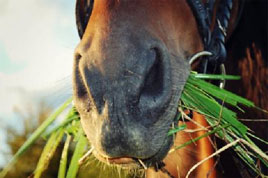 Know your subject - do plenty of research on your subject before attempting to photograph them. Learn about their sleeping patterns, eating habits, and when they are most active. By understanding as much about the animal prior to the shots you are maximizing your chances of finding the animal. Learn if they are skittish, or relaxed, figure out if you will be shooting at 6am or at 6pm. The more knowledge you have the better chances of landing that spectacular shot. Consider a variety of shots pertaining to the animal's behaviors. If they spend a majority of their day in a tree, figure out ways you will be able to capture the essence of their personality from up above. For skittish animals, or to capture video without the animal knowing he or she is being watched, our readers have suggested using a security camera along with a real-time DVR that allows for fast video capture without frame skipping. There are many different options available, including night vision and zoom lens. Some cameras even offer the ability to add an optional outdoor microphone and use audio detection to trigger recording.
Know your subject - do plenty of research on your subject before attempting to photograph them. Learn about their sleeping patterns, eating habits, and when they are most active. By understanding as much about the animal prior to the shots you are maximizing your chances of finding the animal. Learn if they are skittish, or relaxed, figure out if you will be shooting at 6am or at 6pm. The more knowledge you have the better chances of landing that spectacular shot. Consider a variety of shots pertaining to the animal's behaviors. If they spend a majority of their day in a tree, figure out ways you will be able to capture the essence of their personality from up above. For skittish animals, or to capture video without the animal knowing he or she is being watched, our readers have suggested using a security camera along with a real-time DVR that allows for fast video capture without frame skipping. There are many different options available, including night vision and zoom lens. Some cameras even offer the ability to add an optional outdoor microphone and use audio detection to trigger recording.
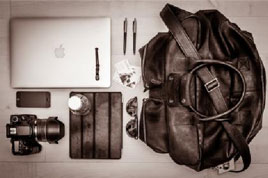 Know your camera and other gear - First make sure you have all of the appropriate photography gear, including a functioning camera, a variety of lens, specifically a zoom lens, a digital camera, a nature camera, a tripod, and a durable camera bag. When selecting a camera bag make sure it is multi-faceted with tons of storage, and it is imperative that it is water proof, as conditions are unpredictable. Understand that different animals need different kind of lens, or zoom lens so take that into consideration when packing the camera bag. Give your camera equipment and photo time when going in and out of the sun as it affects white balance.
Know your camera and other gear - First make sure you have all of the appropriate photography gear, including a functioning camera, a variety of lens, specifically a zoom lens, a digital camera, a nature camera, a tripod, and a durable camera bag. When selecting a camera bag make sure it is multi-faceted with tons of storage, and it is imperative that it is water proof, as conditions are unpredictable. Understand that different animals need different kind of lens, or zoom lens so take that into consideration when packing the camera bag. Give your camera equipment and photo time when going in and out of the sun as it affects white balance.
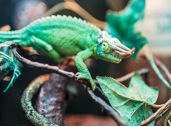 Understand the habitat and the weather conditions - Because the majority of wildlife photography takes place outside you need to check the weather and plan accordingly for both the photographer, and camera kits benefit. It is important to have comfortable, water proof, sturdy shoes that can handle hiking, standing, and trekking through mud or dirt. If it's extremely hot or cold make sure you have the appropriate garments, comfort and functionality are key. This holds true for your camera equipment, camera system, digital camera, nature camera, lens, zoom lens and photo as well, make sure you have coordinating gear for the weather where you will be. Understanding the location is just as important so you know what time there will be the best lighting, and you can choose a background, or lack thereof that suits your photo's needs.
Understand the habitat and the weather conditions - Because the majority of wildlife photography takes place outside you need to check the weather and plan accordingly for both the photographer, and camera kits benefit. It is important to have comfortable, water proof, sturdy shoes that can handle hiking, standing, and trekking through mud or dirt. If it's extremely hot or cold make sure you have the appropriate garments, comfort and functionality are key. This holds true for your camera equipment, camera system, digital camera, nature camera, lens, zoom lens and photo as well, make sure you have coordinating gear for the weather where you will be. Understanding the location is just as important so you know what time there will be the best lighting, and you can choose a background, or lack thereof that suits your photo's needs.
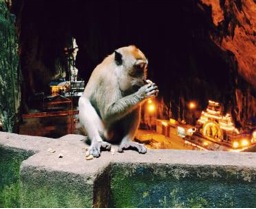 Lighting can make or break a photo - behind every successful shot and photo is effective and appropriate lighting. You must consider the lighting that will be available where you are shooting, along with a backup plan if natural lighting is not readily available for the landscape and photo. Work around the clouds, macro photos or long exposure are better in over cast weather for any nature camera. In contrast avoid over exposure as bright spots or dark shadows can negatively impact vision and photo. Always be aware of the golden hour and try to plan around that. Camera kits have amazing capabilities, employ dramatic lighting to your advantage, you can get beautiful silhouette shots at sunset when you might least expect it. If you are taking pictures in the dark, make sure you are using infrared night vision cameras to capture video.
Lighting can make or break a photo - behind every successful shot and photo is effective and appropriate lighting. You must consider the lighting that will be available where you are shooting, along with a backup plan if natural lighting is not readily available for the landscape and photo. Work around the clouds, macro photos or long exposure are better in over cast weather for any nature camera. In contrast avoid over exposure as bright spots or dark shadows can negatively impact vision and photo. Always be aware of the golden hour and try to plan around that. Camera kits have amazing capabilities, employ dramatic lighting to your advantage, you can get beautiful silhouette shots at sunset when you might least expect it. If you are taking pictures in the dark, make sure you are using infrared night vision cameras to capture video.
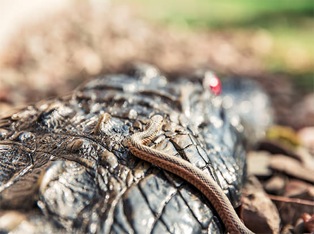 Perspective is powerful - capture something that has not been seen in a more in depth way, or a new angle. Get on the level of the animal to capture the not so obvious perspective with the camera system even if it means lying on your belly holding up that zoom lens, or climbing up a tree with a heavy nature camera. Use technology to your advantage, utilize a drone, GoPro, motion activated video camera with SD slot, or buggie to get that unconventional view. Think out of the box; you can even use a low power wireless security camera connected to a battery to send a live video feed back to a central monitoring station. Utilize wide shots from vari-focal lenses to share information about the animal, and close up shots to show their personality. Use the background to your advantage, either go for a minimalist effect, or include the plush and dynamic surroundings of the animal.
Perspective is powerful - capture something that has not been seen in a more in depth way, or a new angle. Get on the level of the animal to capture the not so obvious perspective with the camera system even if it means lying on your belly holding up that zoom lens, or climbing up a tree with a heavy nature camera. Use technology to your advantage, utilize a drone, GoPro, motion activated video camera with SD slot, or buggie to get that unconventional view. Think out of the box; you can even use a low power wireless security camera connected to a battery to send a live video feed back to a central monitoring station. Utilize wide shots from vari-focal lenses to share information about the animal, and close up shots to show their personality. Use the background to your advantage, either go for a minimalist effect, or include the plush and dynamic surroundings of the animal.
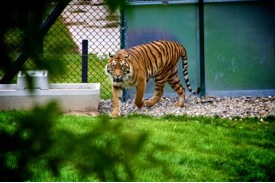 Be safe and patient - patience is a virtue, especially in the world of wildlife photography. Just think, the longer you wait with your camera equipment out in the field the more time you get to spend with the animals learning their habits and personalities, which will then lead to a more dynamic photo. Rome wasn't built in a day, and neither was the most impressive wildlife shot and photo. Last, but not least, always be safe! After all you are dealing with living, breathing, unpredictable wild animals. Understand push and pull, if the shy leopard is retreating to their familiar branch from the sight of the zoom lens, let them retreat and do not push it. Be respectful of the subjects, your camera kits and of your body, always know when to call it off.
Be safe and patient - patience is a virtue, especially in the world of wildlife photography. Just think, the longer you wait with your camera equipment out in the field the more time you get to spend with the animals learning their habits and personalities, which will then lead to a more dynamic photo. Rome wasn't built in a day, and neither was the most impressive wildlife shot and photo. Last, but not least, always be safe! After all you are dealing with living, breathing, unpredictable wild animals. Understand push and pull, if the shy leopard is retreating to their familiar branch from the sight of the zoom lens, let them retreat and do not push it. Be respectful of the subjects, your camera kits and of your body, always know when to call it off.
More Great Reads:
National Geographic - The importance of patience.
How to get the shot - Tips from active and successful photographers.
BBC - Preparation tips before you start.
Do's and Don'ts - What to do and no to do in the field regarding camera system, digital camera, and photo.
Tips for starters - Focus on the subject and check the weather.
Tips and Tricks - Importance of not forgetting comfort items or your camera equipment.
Improve photography - Understand and manipulate lighting for digital camera or nature camera and photo.
Wildlife photography - Use the background to your advantage.
Wildlife Photography Gear - Examples of the best gear like: nature camera, lens, zoom lens, camera kits
Lens and Teleconverters - The best lens, zoom lens and teleconverters to use.

